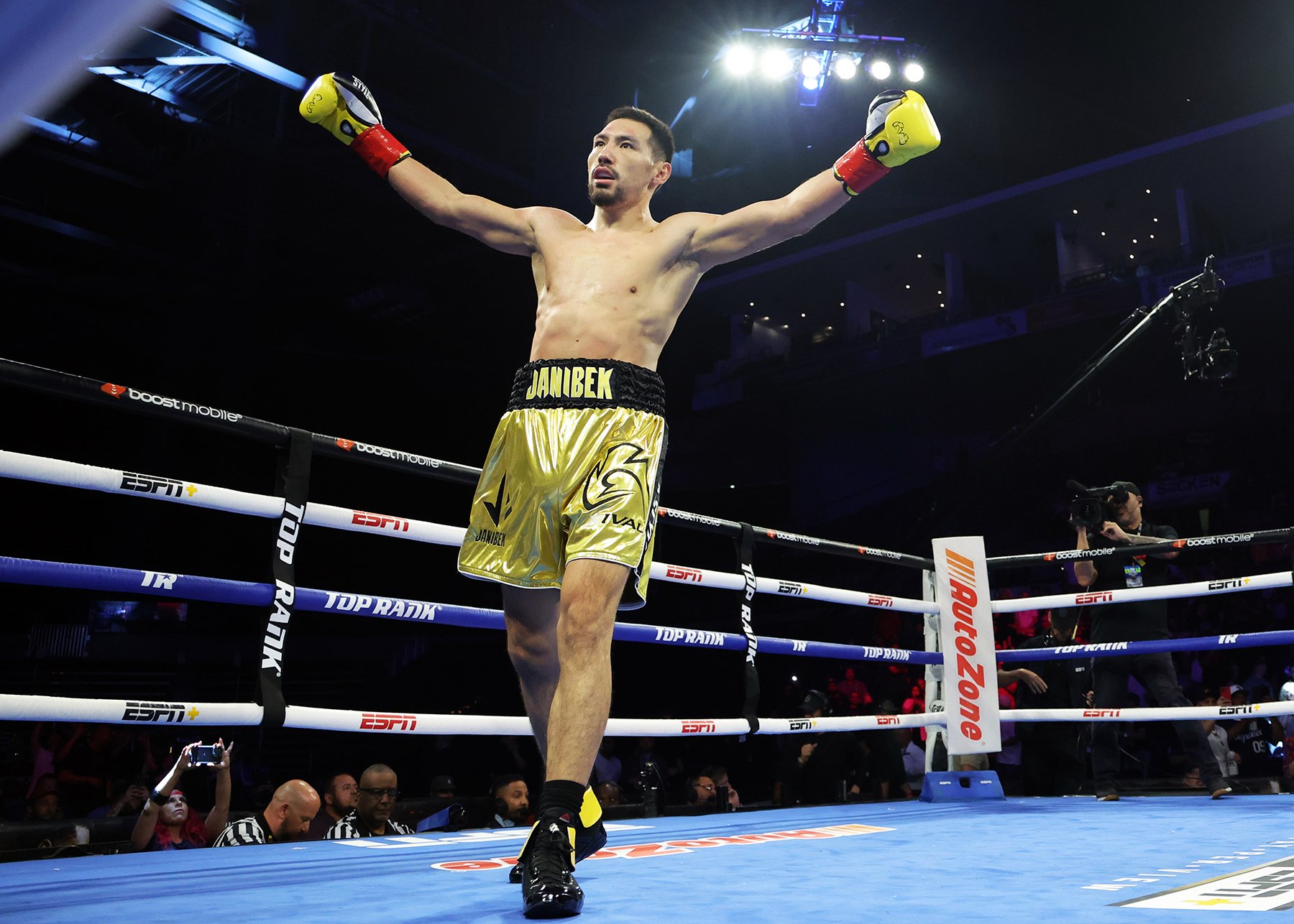By Daniele D’Alessio
THIS week, Janibek Alimkhanuly became the latest victim of weight cutting in professional boxing. Extreme dehydration forced the Kazakh to pull out of his bout with Andrei Mikhailovich and thus relinquish the opportunity to have his first bout of 2024. But when you look at the landscape of fighters who are boiling themselves down to get a size advantage in the ring, it’s surprising these late pullouts are so rare.
At its best, weight-cutting is like a magic show. On the scale, you will see the skeleton of a boxer—one who seems to be lacking the nutrients and level of hydration seen in a healthy person. The body appears dry, and the person lacks zest. Dark circles surround their eyes, and their face looks drawn.
Yet, on fight night, after the replenishment of fluid and calories, a transformation takes place. All of a sudden, the boxer looks full, their muscles pumped and ready for combat. And, of course, they are much bigger and heavier than what they were on the scale.
But as Janibek found out, if you’re cutting too much weight, it becomes dangerous. Instead of an upper hand, your body will shut down to protect you and even if you do make it into the ring, there will be no power left. Just a drained athlete who put all of their energy into hot baths and sweatsuits.
Before his move to 154 lbs, Vergil Ortiz was a fighter developing a reputation for pulling out of fights simply because his body couldn’t handle the trauma of getting down to 147. He withdrew from bouts with Eimantas Stanionis and Michael McKinson due to a condition called rhabdomyolysis. But since fighting at light-middleweight, he seems healthier. There were no postponements for Fredrick Lawson or Thomas Dulorme this year.

Vergil Ortiz (Getty Images)
Indeed, the weight-cutting phenomenon is commonplace at the elite level, solely by observing the size of certain boxers who compete in certain weight categories. On Saturday night, Jaron Ennis stopped David Avanesyan in five rounds. Aside from such a dominant performance, though, it’s hard to ignore how much bigger Ennis was to his opponent. Despite being a world title fight at 147 lbs, ‘Boots’ wouldn’t have looked out of place if he was in there with a middleweight instead.
Similar could be said for Devin Haney, when ‘The Dream’ was the undisputed lightweight champion. And when he moved up to 140 lbs to face Regis Prograis for the WBC title, he still appeared big for the weight, famously rehydrating to 165 lbs on fight night.
Then there are the likes of David Benavidez and David Morrell, who are both huge men. Yet, they were somehow able to make 168 lbs for several of their bouts before temporarily (or not temporarily) moving up to 175 lbs.
Not to mention, the earlier years of Canelo Alvarez when he used to compete at 155 lbs. After getting knocked out in the sixth round in 2016, Amir Khan claimed in an interview with DAZN that he thought Canelo came into the ring at over 185 lbs. We will never know the complete truth, but Canelo has gone on to capture a world title at 175 lbs.

Notably, the IBF has attempted to create a level playing field by forcing boxers who are fighting for their world title to take part in a second weigh-in on the day of the fight. This makes it harder for there to be a massive weight difference between two competitors on fight night. However, this doesn’t fix the issue of dehydration. In fact, it arguably makes it worse as the boxers can’t fully rehydrate.
This feeds into another aspect of weight cutting, which is not talked about as much: the increased risk of brain damage. Without getting too scientific, fluid surrounds the brain. If you’re severely dehydrated, your brain will take more punishment along with every blow that lands on your head.
Overall, at the elite level, whether it’s boxing or any other sport, history shows us that athletes are willing to do anything it takes to win. Until there are weight categories, boxers like Janibek may continue to take a chance on their health to gain a competitive advantage.






